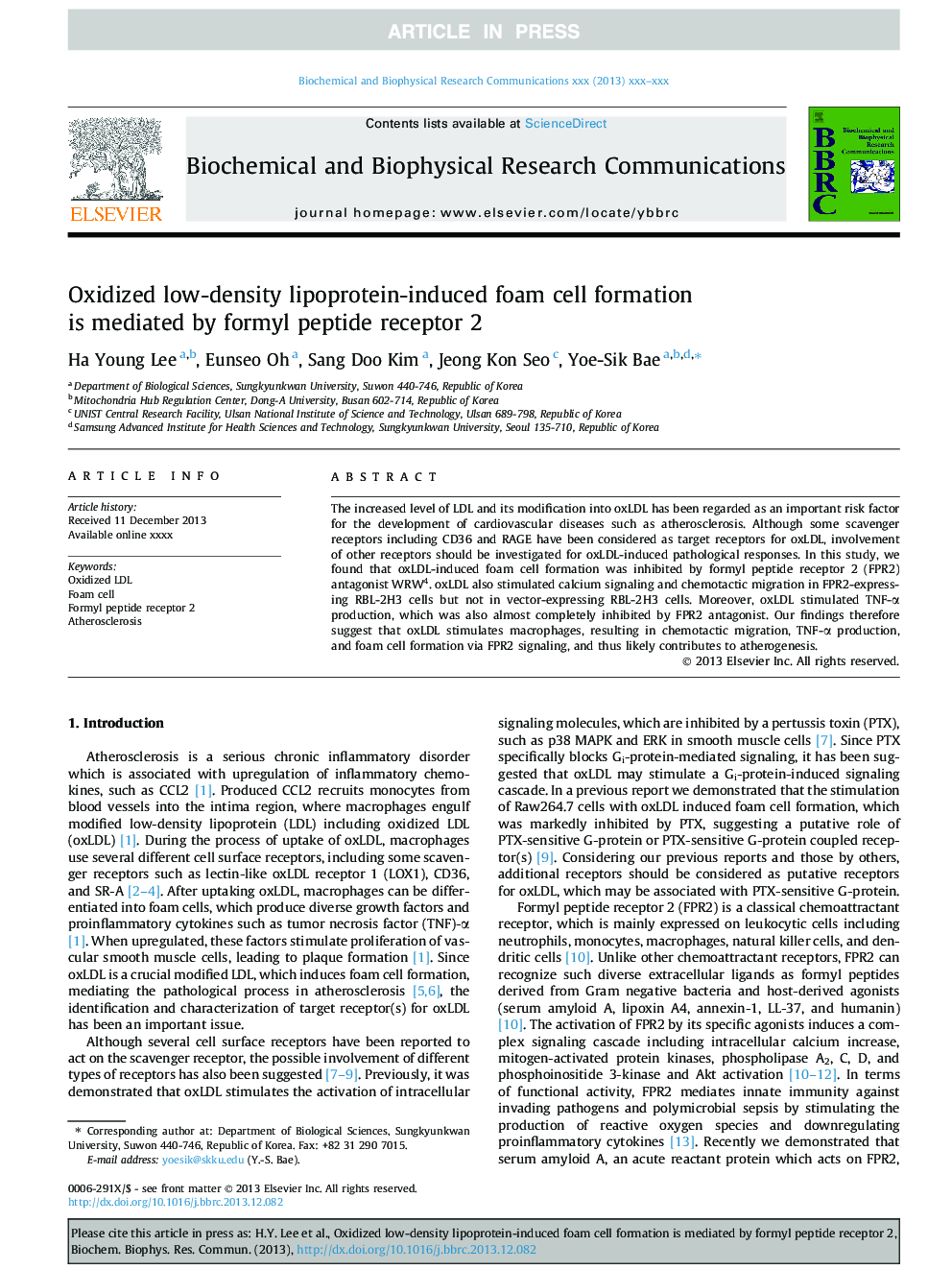| Article ID | Journal | Published Year | Pages | File Type |
|---|---|---|---|---|
| 10757090 | Biochemical and Biophysical Research Communications | 2014 | 5 Pages |
Abstract
The increased level of LDL and its modification into oxLDL has been regarded as an important risk factor for the development of cardiovascular diseases such as atherosclerosis. Although some scavenger receptors including CD36 and RAGE have been considered as target receptors for oxLDL, involvement of other receptors should be investigated for oxLDL-induced pathological responses. In this study, we found that oxLDL-induced foam cell formation was inhibited by formyl peptide receptor 2 (FPR2) antagonist WRW4. oxLDL also stimulated calcium signaling and chemotactic migration in FPR2-expressing RBL-2H3 cells but not in vector-expressing RBL-2H3 cells. Moreover, oxLDL stimulated TNF-α production, which was also almost completely inhibited by FPR2 antagonist. Our findings therefore suggest that oxLDL stimulates macrophages, resulting in chemotactic migration, TNF-α production, and foam cell formation via FPR2 signaling, and thus likely contributes to atherogenesis.
Related Topics
Life Sciences
Biochemistry, Genetics and Molecular Biology
Biochemistry
Authors
Ha Young Lee, Eunseo Oh, Sang Doo Kim, Jeong Kon Seo, Yoe-Sik Bae,
